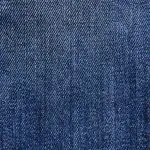Have you ever wondered how silk knit fabric burns?
In this article, we will explore the fascinating world of silk knit fabric combustion. You will discover the fiber composition of silk knit fabric, its ignition temperature, and the flame spread and rate.
We will also delve into smoke production, heat release rate, and toxic gas emissions.
By understanding the factors that affect silk knit fabric burning behavior, you will gain valuable insights into the science behind this intriguing process.
Table of Contents
Fiber Composition of Silk Knit Fabric
Silk knit fabric burns differently depending on its fiber composition. The properties of silk fibers play a significant role in determining the burning behavior of the fabric.
Silk is a natural protein fiber produced by silkworms, and it is known for its lustrous appearance and luxurious feel. The fiber properties of silk, such as its high tensile strength and excellent moisture absorption, contribute to its unique burning behavior.
When silk knit fabric made from pure silk fibers is exposed to flames, it exhibits a slow and controlled burn. The flame does not spread quickly, and the fabric tends to self-extinguish. This is due to the inherent flame-resistant properties of silk and its ability to resist ignition. Silk fibers have a high ignition temperature, which means that they require more heat to ignite compared to other fabrics.
On the other hand, if the silk knit fabric is blended with synthetic fibers like polyester, the burning behavior changes. Synthetic fibers have different properties, including lower ignition temperatures and higher flammability. As a result, the blended fabric may burn more easily and rapidly compared to pure silk fabric.
Understanding the fiber composition of silk knit fabric is essential for assessing its burning behavior. By considering the different fiber properties, manufacturers and consumers can make informed decisions regarding the safety and durability of silk knit products.
Ignition Temperature of Silk Knit Fabric
When it comes to discussing the ignition temperature of silk knit fabric, it’s important to understand the difference between high and low temperatures.
At high temperatures, silk knit fabric is more likely to ignite and burn.
However, the flame retardant properties of silk knit fabric can help to prevent or slow down the spread of fire, particularly at lower temperatures.
High Vs. Low Temperatures
At high temperatures, silk knit fabric can burn more quickly than at lower temperatures. When exposed to high temperatures, the fibers in silk fabric become more susceptible to combustion. The heat causes the fibers to break down, releasing flammable gases that can ignite easily. The higher the temperature, the faster this process occurs.
On the other hand, at low temperatures, silk knit fabric is less likely to catch fire. The fibers are more stable and resistant to combustion, making it harder for them to ignite. However, it is important to note that even at low temperatures, silk fabric can still burn if exposed to an open flame or a heat source for a prolonged period.
Therefore, it is crucial to handle silk knit fabric with care and avoid exposing it to high temperatures or open flames.
Flame Retardant Properties
To make sure your silk material is less likely to catch fire, consider using flame retardant treatments or finishes. Flame resistance testing is a crucial step in ensuring the safety of silk fabrics.
Here are three fire prevention measures you can take:
-
Flame retardant treatments: Applying flame retardant chemicals to silk fabric can significantly increase its resistance to catching fire. These treatments work by delaying or preventing the spread of flames.
-
Flame retardant finishes: Another option is to use silk fabrics that have been finished with flame retardant coatings. These finishes create a protective layer that inhibits the fabric from igniting.
-
Follow safety guidelines: In addition to using flame retardant treatments or finishes, it is important to follow general fire safety guidelines. Avoid exposing silk fabrics to open flames or high heat sources, and make sure to keep them away from combustible materials.
Flame Spread and Rate of Silk Knit Fabric
You’ll notice that silk knit fabric burns slowly with a low flame spread rate. This is due to its inherent properties and the way it reacts to fire. Silk is a natural protein fiber that contains a high amount of nitrogen, which acts as a flame retardant. The nitrogen in silk decomposes when exposed to heat, releasing non-flammable gases that inhibit the spread of flames. Additionally, silk has a higher ignition temperature compared to other fabrics, further contributing to its flame-resistant nature.
To prevent flame spread in silk knit fabric, it is important to take certain precautions. One effective method is to treat the fabric with flame retardant chemicals. These chemicals can be applied during the manufacturing process or as a post-treatment. Another approach is to use fire-resistant coatings or finishes on the fabric, which create a protective barrier against flames.
In the event of a fire, it is crucial to extinguish it as quickly as possible to minimize damage and prevent further spread. Common fire extinguishing methods, such as water, foam, or dry powder, can be used to put out flames on silk knit fabric. It is important to remember that silk, like any other fabric, can still be damaged by fire, so it is essential to exercise caution and follow proper safety protocols.
Smoke Production From Burning Silk Knit Fabric
Now that you understand the flame spread and rate of silk knit fabric, let’s dive into the topic of smoke production from burning silk knit fabric.
Smoke inhalation is one of the most dangerous aspects of a fire, often causing more harm than the flames themselves. When silk knit fabric burns, it releases smoke that can be toxic and highly irritating to the respiratory system.
Here are three key points to keep in mind:
-
Toxic substances: The combustion of silk knit fabric produces toxic gases such as carbon monoxide, hydrogen cyanide, and nitrogen dioxide. These gases can quickly incapacitate and even lead to death if inhaled in high concentrations.
-
Irritating smoke: Silk knit fabric also emits particles and soot when it burns, which can irritate the airways and cause respiratory distress. This can be particularly dangerous for individuals with pre-existing respiratory conditions such as asthma or chronic bronchitis.
-
Fire extinguishing methods: To minimize smoke production and protect yourself from its harmful effects, it is crucial to promptly extinguish any fires involving silk knit fabric. Traditional fire extinguishing methods like water, foam, or carbon dioxide can be effective in suppressing the fire and reducing smoke generation.
Heat Release Rate of Burning Silk Knit Fabric
When it comes to the burning characteristics of silk, it is important to consider fire safety considerations.
Silk is a natural fiber that burns more slowly than synthetic fibers, but it can still catch fire and melt if exposed to a flame.
It is crucial to be cautious around open flames or heat sources and ensure that silk garments are stored and worn safely to prevent accidents.
Burning Characteristics of Silk
Silk knit fabric has unique combustion behaviors that make it a safer choice compared to other fabrics. Here are three key things to know about how silk burns:
-
Low ignition temperature: Silk has a relatively low ignition temperature compared to other natural fibers, such as cotton or wool. This means it can catch fire more easily when exposed to heat or an open flame.
-
Slow burning rate: Once ignited, silk burns slowly. It doesn’t produce large flames or spread rapidly like some synthetic fabrics. This slow burning rate gives you more time to react and extinguish the flame.
-
Self-extinguishing properties: One of the unique characteristics of silk is its ability to self-extinguish. Once the flame source is removed, silk will stop burning on its own.
Understanding these combustion behaviors can help you make informed decisions about the use and care of silk knit fabric. By handling it with care, you can ensure its longevity.
Fire Safety Considerations
To ensure your safety, it’s important to consider fire safety measures when using and caring for silk.
Silk fabric is known for its luxurious feel and delicate nature, but it can also pose a fire hazard if not handled properly. When working with silk, it is crucial to take fire prevention precautions.
Keep silk garments and fabrics away from open flames, heaters, and other heat sources. Ensure that your silk items are stored in a cool and dry place, away from potential fire hazards.
In case of a fire, having a fire extinguisher nearby can be crucial. Make sure you have a working fire extinguisher and know how to use it properly.
Toxic Gas Emissions From Silk Knit Fabric Fire
Burning silk knit fabric can release toxic gas emissions, posing a significant health risk to anyone who inhales the smoke. Here are three important things to know about the toxicity of burning silk knit fabric and the potential health risks associated with it:
-
Toxic gas emissions: When silk knit fabric burns, it releases toxic gases such as carbon monoxide, nitrogen dioxide, and hydrogen cyanide. These gases can be harmful to your health, especially when inhaled in large quantities or for prolonged periods.
-
Carbon monoxide poisoning: The combustion of silk fabric produces carbon monoxide, a colorless and odorless gas. Inhaling high levels of carbon monoxide can lead to symptoms like dizziness, nausea, headaches, and even loss of consciousness. Prolonged exposure to carbon monoxide can be life-threatening.
-
Respiratory problems: The smoke produced by burning silk knit fabric contains various harmful substances that can irritate the respiratory system. Inhaling this smoke can cause coughing, wheezing, shortness of breath, and even exacerbate existing respiratory conditions like asthma or bronchitis.
It is crucial to be aware of the potential health risks associated with inhaling smoke from burning silk fabric. Taking necessary precautions, such as avoiding exposure to the smoke and ensuring proper ventilation in case of a fire, can help protect your health and well-being.
Factors Affecting Silk Knit Fabric Burning Behavior
Factors such as temperature, oxygen availability, and fabric composition can impact how silk knit fabric burns. The type of fiber used in the fabric plays a crucial role in fabric composition. Silk knit fabric, made from natural silk fibers, has a higher resistance to burning compared to synthetic fibers like polyester or nylon. This is because natural fibers have a higher ignition temperature and tend to burn more slowly.
Temperature also plays a significant role in the burning behavior of silk knit fabric. Higher temperatures can cause the fabric to ignite more easily and burn at a faster rate. Oxygen availability is another factor that affects the burning behavior. More oxygen supply can support combustion and result in a faster and more intense fire.
To prevent silk knit fabric from burning, there are several fire prevention methods that can be employed. One effective method is to treat the fabric with flame retardant chemicals. These chemicals reduce the fabric’s flammability and slow down the burning process. Another method is to avoid exposing the fabric to high temperatures or open flames. Additionally, proper storage and handling of silk knit fabric can also help prevent accidental fires.
Conclusion
In conclusion, silk knit fabric has unique burning characteristics. It has a relatively low ignition temperature and can quickly spread flames. When burning, it produces smoke and releases heat at a moderate rate. Additionally, it can emit toxic gases, which can be harmful.
The burning behavior of silk knit fabric can be influenced by various factors such as fabric composition and construction. It is important to understand these characteristics to ensure safety and make informed decisions while using or handling silk knit fabric.
- Reviving Office Furniture: A Guide to Cleaning Steelcase Chair Fabric - June 25, 2025
- DIY Pillowcase Design: How to Transfer Images to Fabric at Home - June 25, 2025
- Upgrade Your Gear: How to Attach a Custom Label to a Fabric Gun Case - June 25, 2025






